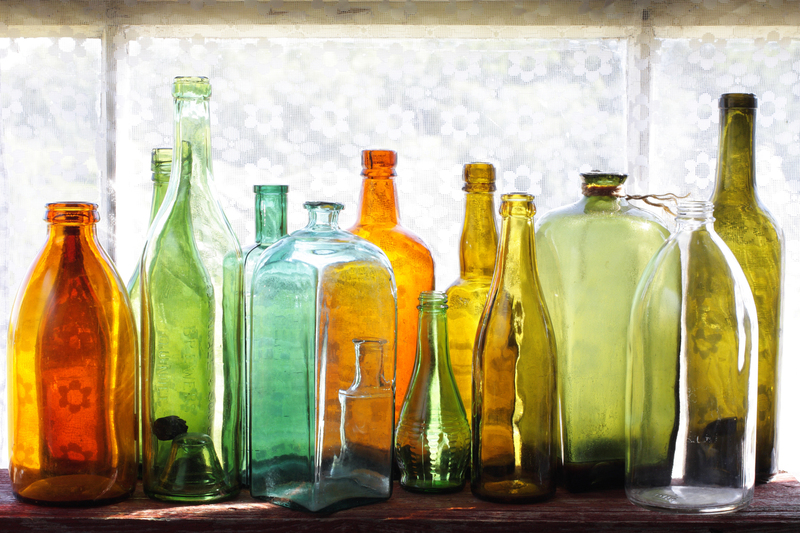Making the Most of Old Cookware Through Proper Disposal
Are you wondering what to do with your old pots and pans? Many of us have ancient cookware stacking up in our kitchens, closets, or garages. Instead of letting them gather dust or sending them straight to the landfill, learning how to make the most of your old cookware through proper disposal can benefit both you and the environment.
Why Proper Cookware Disposal Matters
Old cookware can seem harmless at first glance, but improper disposal has lasting environmental effects. From nonstick pans leaching chemicals to ancient aluminum pots oxidizing in landfills, knowing how to responsibly get rid of kitchenware is essential.
- Environmental Impact: Cookware materials--like aluminum, stainless steel, glass, and ceramic--often take decades to decompose, potentially leaking toxins.
- Resource Recovery: Many pans are made from recyclable metals, making it possible to reuse resources and reduce the need for new mining or production.
- Safety Considerations: Damaged nonstick coatings can be hazardous if broken down in incinerators or landfills, releasing dangerous chemicals into the environment.

Types of Cookware and How to Dispose of Each
Understanding your cookware's composition is pivotal to choosing the right disposal or recycling option. Here, we review the most common types and best disposal practices.
Cast Iron Cookware
- Reconditioning: Cast iron pots and skillets can often be restored even if they seem rusty or old. Sanding and re-seasoning may give them a new lease on life.
- Recycling: When beyond repair, cast iron can be recycled as scrap metal. Check your local metal recycling center's rules.
- Donation: Many thrift stores or community kitchens will accept cast iron cookware that is still functional.
Stainless Steel Pots and Pans
- Recycling: Stainless steel is highly recyclable and most scrap yards will accept it--even with plastic or wood handles attached.
- Repurposing: Turn old pans into planters, organizers, or bird baths!
Nonstick Cookware
- Donation: If the surface is still intact, donate to shelters or kitchens in need.
- Recycling: Nonstick pans often have limited recycling options due to their coating. Remove handles and check if your center accepts them. Otherwise, seek manufacturer take-back programs.
- Disposal: If chipping or flaking, double-bag and dispose in the trash due to potential toxins. Never burn nonstick cookware.
Aluminum Cookware
- Recycling: Like stainless steel, aluminum is in high demand for recycling. Ensure pans are clean and handles are removed, if possible.
- Art Projects: Aluminum is easy to cut and manipulate for creative DIY projects.
Glass, Ceramic, and Enamel Coated Cookware
- Reuse: Glass and ceramic dishes can make great drawer organizers or decorative pieces.
- Recycling: Most municipal recycling programs do not accept broken cookware, but some specialty facilities do.
Creative Ways to Repurpose Old Cookware
Looking for ways to give your old kitchen gear new life? Instead of tossing it, think about creative reuses that can add charm and functionality to your home or garden.
- Planters: Drill drainage holes in pots and pans, then fill them with soil and your favorite plants.
- Organizers: Use large pans as catch-alls in the garage or shed, or hang lids on the wall for mail or magazine storage.
- Bird Baths or Feeders: Make unique centerpieces for your backyard wildlife.
- Art Projects: Paint, mosaic, or customize old cookware for innovative garden art, candle holders, or wall hangings.
Donation: Giving Cookware a Second Life
Functional cookware doesn't belong in the trash--many people and organizations will gladly receive a donation. Here are some options:
- Local Thrift Stores: Goodwill, Salvation Army, or Habitat for Humanity ReStores often accept cookware in fair condition.
- Community Centers & Shelters: These organizations run on tight budgets and appreciate any donation of kitchen equipment.
- Friends and Neighbors: Sometimes a simple ask on local online groups like Facebook Marketplace or Nextdoor reveals someone in need.
How to Recycle Old Cookware
Recycling is a top method for disposing of old cookware responsibly. Knowing the correct steps can increase your chances of successful recycling.
Steps for Recycling Metal Cookware
- Check the material: Verify if your pan is aluminum or stainless steel.
- Remove non-metal parts: Unscrew or cut off handles made from plastic, rubber, or wood if possible.
- Clean thoroughly: Avoid contamination by washing off any residual food or oil.
- Drop off at scrap yard: Find a local metal recycler who will accept pots, pans, and lids.
What About Nonstick and Coated Pans?
- Most municipal programs won't accept these due to chemical coatings.
- Look for manufacturer take-back programs--brands like Calphalon and some cookware companies offer mail-in recycling.
- If no options are available, disposing in general waste is sometimes the only choice for heavily worn nonstick pans.
Finding Specialty Recycling Centers
For glass, ceramic, or mixed-material cookware, search for specialty recyclers or Household Hazardous Waste (HHW) programs in your city. They may run occasional drop-off days for difficult-to-recycle kitchen goods.
Preparing Cookware for Disposal or Donation
Proper preparation ensures safety and increases the likelihood of successful recycling or reuse.
- Clean Thoroughly: Wash and dry the cookware, making sure there are no food residues or greasy surfaces.
- Remove Handles and Lids: Disassemble if necessary--some centers require each material be sorted.
- Assess Hazardous Coatings: If nonstick pans are chipping, clearly label and contain them for donation or disposal.
- Package Safely: If donating breakable items like glass or ceramics, use bubble wrap or newspaper to prevent damage in transit.
Environmental Benefits of Proper Cookware Disposal
- Reduces landfill waste: With strategic recycling and donation, fewer heavy metals and toxic coatings end up polluting local landfills.
- Conserves resources: Recycling metals reduces the need for energy-intensive mining and smelting.
- Supports your community: Donation enables local charities to provide more meals and essential services with less expense.
Frequently Asked Questions About Old Cookware Disposal
Can I put my old cookware in the curbside recycling bin?
Usually, no. Most curbside programs are designed for cans and containers, not bulky pots and pans. Take cookware to a metal recycler or scrap yard instead.
What should I do with pans that have Teflon or nonstick coatings?
Check with your local recycling programs or manufacturers for take-back options. If nonstick surfaces are damaged, dispose of them as trash, double-bagged for safety.
Is it safe to give away cookware with minor scratches?
Yes, as long as coatings are not flaking and the pan is still functional. Clearly indicate any issues to the recipient or donation center.
Are there eco-friendly cookware options I should buy next time?
Absolutely. Consider cookware made from recycled materials, or items designed to be recycled at the end of life. Cast iron, stainless steel, and glass are excellent long-term investments.

Tips for Extending the Life of Your Cookware
Proper care and maintenance can keep your kitchen gear out of the waste stream longer. Here are some easy steps:
- Follow cleaning recommendations: Always consult the manufacturer's advice. Avoid metal tools on nonstick surfaces.
- Season cast iron regularly: A well-seasoned pan resists rust and nonstick buildup.
- Avoid thermal shock: Let pans cool before rinsing, especially glass and ceramic.
- Repair minor damage: Tighten loose handles, replace knobs, or recoat cookware as needed.
Conclusion: The Value of Responsible Cookware Disposal
Disposing of old cookware properly is an easy way to protect the environment, support your community, and unleash creativity in your home or garden. With recycling, donation, and upcycling options available, it is no longer necessary to let old pots and pans take up precious space or contribute to landfill waste.
Making the most of old cookware through responsible disposal means thinking before you toss--and making a positive impact with every pan.
Ready to clear out your kitchen? Use the tips, tricks, and local resources outlined in this guide to give your old cookware a new life or send it off in the greenest way possible.